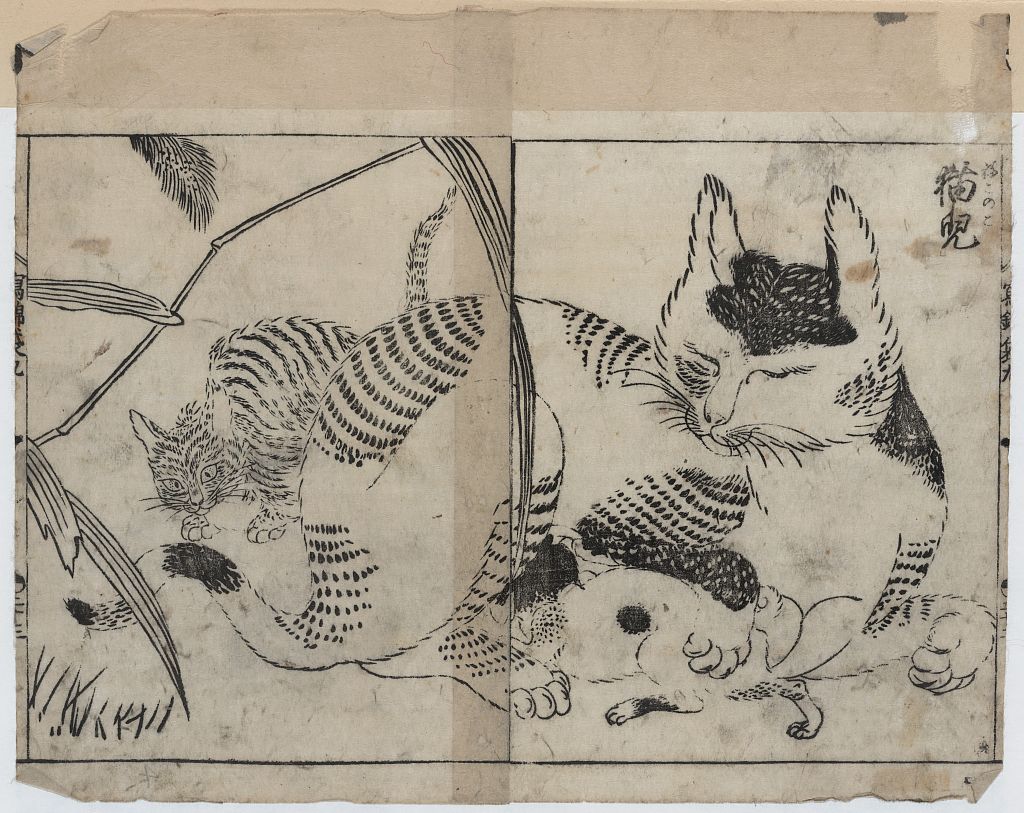
Trials and Tribulations: The Evolution and History of the Cats we Love
This post was an interesting one to research. I’ve written on this matter several times and in studying for this post, I've found that I’ve been duped by some very widely spread misinformation. (The cat holocaust? Witch burning, cat drowning? You know, the stuff you hear around every Halloween? All hogwash.) Even textbooks are being published with this misinformation, often leading back to a single historian who highly attributes his statements on these matters to assumption. My mind is truly blown, I’ve spent hours trying to legitimize these claims, but, it doesn’t seem like there’s anything out there. I believe there’s some truth to the general concepts, but not to the claims themselves. It’s been a wild one, and I do hope you find yourself as enthralled as I was by the fruits of this labor! So, let’s dive in. My picture game is a little weak here; there’s not much out there in the public domain, at least that I can find but I dug up a few things!
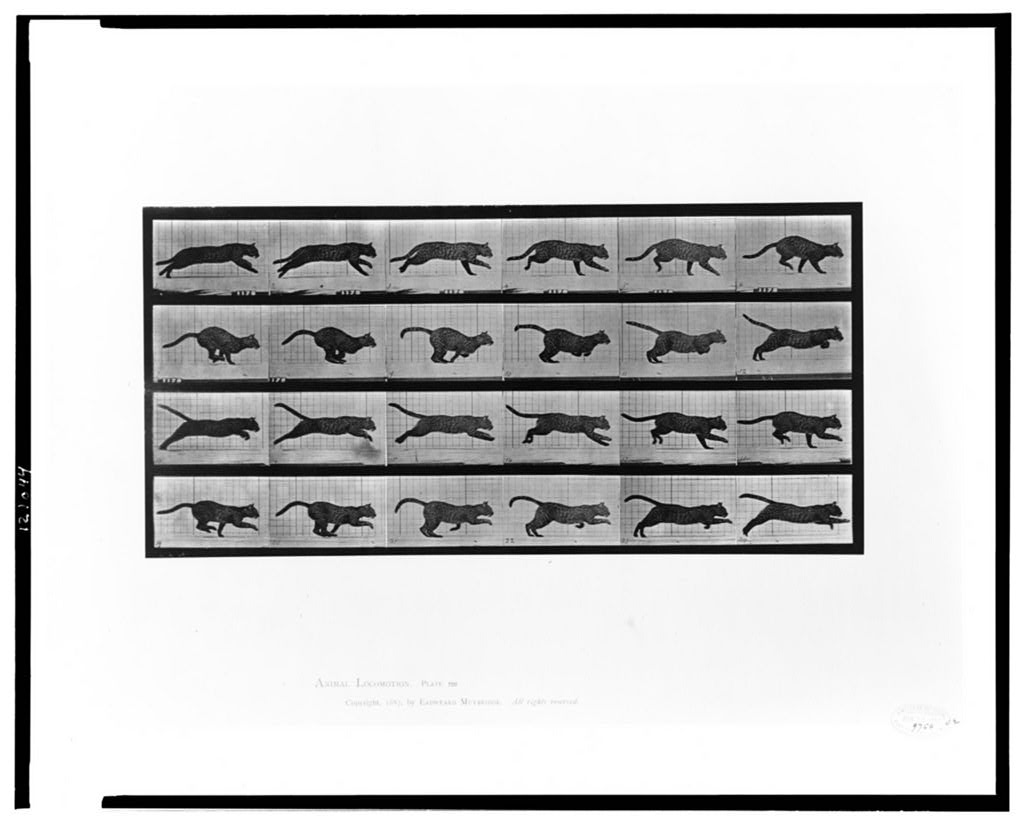
Muybridge, E., photographer. (ca. 1887) Animal Locomotion. , ca. 1887. Jun 13. [Photograph] Retrieved from the Library of Congress, https://www.loc.gov/item/98514094/.
20 million years ago, there was the Pseudaelurus, sometimes classified as the Styriofelis, which evolved to become the felid species, large and small that we know today. The Pseudolurus is the ancestor of all felines. The number of felid species is highly debated, but currently, it’s held that there are 40 wild species as well as the domestic cat – these are extant today, not including those long gone. There are two subfamilies, Pantherinae, containing big cats, and Felinae which contains all others, including the domestic cat. A study of 979 wildcats and domestic cats from all over the world worked to establish the nearest wild relative to our domestic cats using mitochondrial DNA, scientists determined that the wild cats all group into 5 different lineages, however, all domestic cats – no matter the breed, were from the same lineage – that of Felis Lybica Lybica (formerly classified as Felis Silvestris Lybica – you may see things at some point considering Felis Silvestris their direct ancestor, and this is not inherently incorrect, just outdated classifications. It was formerly Felis S. Lybica – many often dropping the subspecies for whatever reason, but now it’s Felis L. Lybica.)
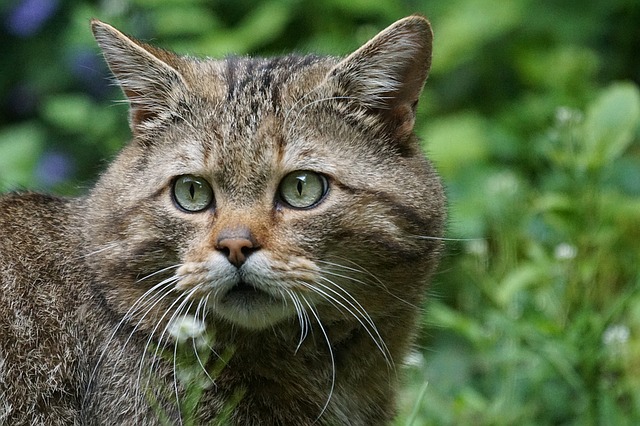
Felis Silvestris – European Wildcat
It’s believed that the name “Cattus” originated from the north African Berbers name for the cat, Kaddiska, or from the Nubian name Qadis. The Latin name for cat is Felis, this preceded Cattus and was used for cats, martens, ferrets, polecats, and tomcats, so there was no differentiation between these animals in Roman writing. Names starting with p – such as puss- are believed to have started from the Egyptian goddess Pasht.
The subspecies:
Domestic Cat – Felis Catus – Reigns from the fertile crescent, evolved from the African wildcat – Felis L. Lybica. Now seen worldwide except Antarctica. (Wild that there’s a place they aren’t! Funnily enough, they didn’t even show up in Australia until 1788!)
European Wildcat – Felis silvestris – Can interbreed with the domestic cat. Known for being particularly difficult if not impossible to tame. Nearly went extinct – but has survived and can be found around western Europe, Scotland, and eastern Europe.
Sand Cat – Felis Margarita – Small, solitary cats found in north Africa, the middle east, and central Asia. Highly adapted to desert life. Can detect prey underground!
Black-footed Cat – Felis Nigripes – Africa’s smallest cat, but don’t let that fool you, these little guys are fierce hunters. May breed with domestic cats and F. L. L, but fertility of offspring has not been recorded.
Felis Lybica – African wildcat – Direct ancestor to the domestic cat, can interbreed with them. Has multiple subspecies (L. Lybica, L. Cafra, L. Ornata) distributed around different parts of Africa, the middle east, and Asia.
Jungle cat – Felis Chaus – Can interbreed with domestic cats – A small to medium-sized cat, found in marshland, more suitably named and often called the swamp cat. Found in the middle east, south and southeast Asia, and southern China.
Chinese mountain cat – Felis Bieti – Elusive. Found on a small area of the eastern Tibetan plateau. They are on the red list for vulnerable species, we suspect there are fewer than 10,000 breeding individuals recorded.
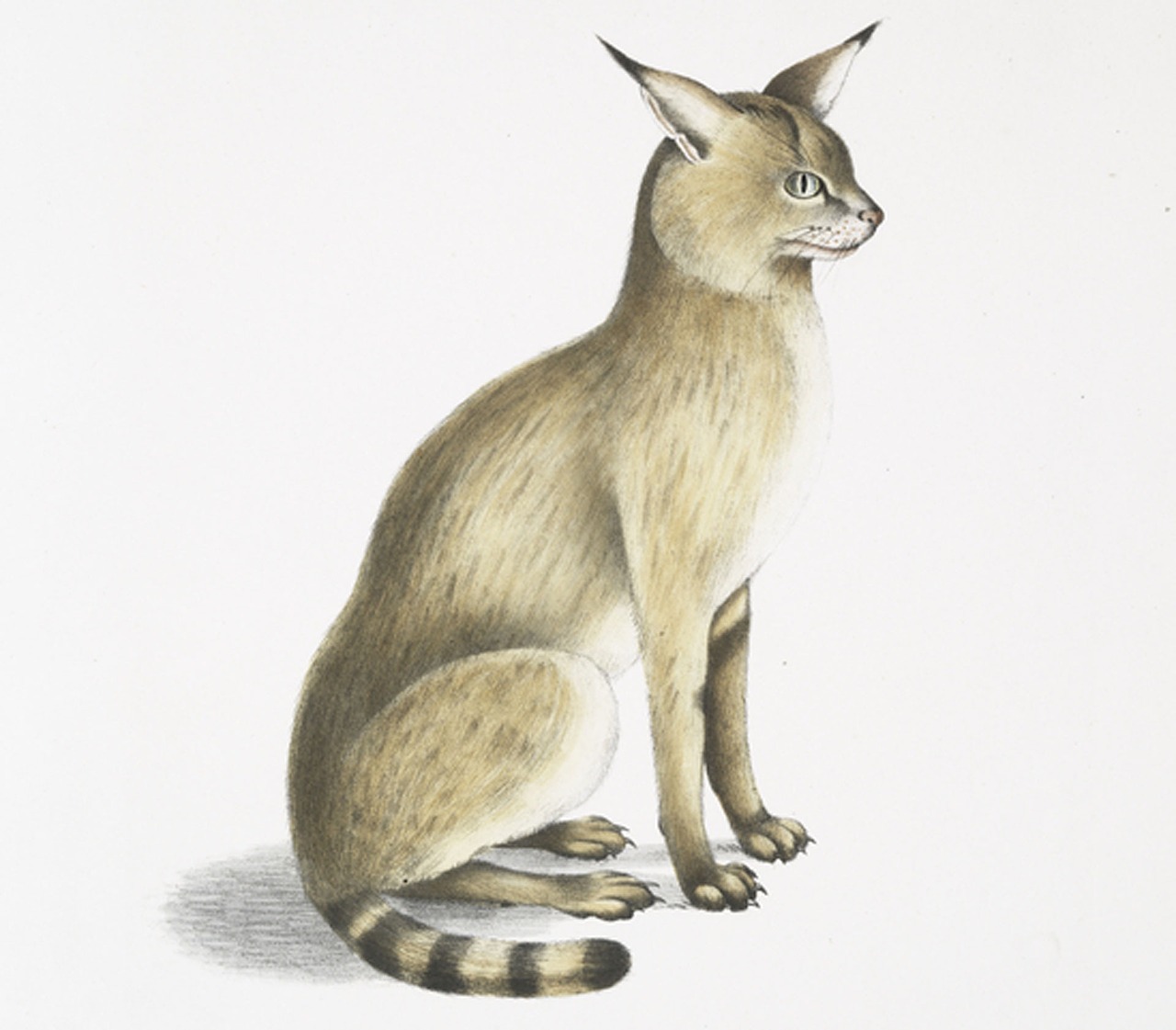
Felis Chaus – Jungle Cat
It is debated exactly how and when the cat became domesticated precisely, and whether they truly even are – as they can interbreed with wild cats and are able to revert to a feral state almost at will, surviving without human intervention. They may be semi-domesticated – or, I think it’s well accepted that they are indeed, self-domesticated. They occupy a very interesting place in comparison to most other species, and we’re still painstakingly trying to figure it all out.
It’s thought that our relationship with the wildcat that kickstarted their eventual domestication initially began some 10,000 years ago in the fertile crescent. We were learning to harvest grains and our lifestyles were changing, rather than constantly traveling and carrying out the hunter-gatherer lifestyle, we began creating settlements and food/grain stores. These grain stores inevitably attracted rodents, which in turn caught the attention of the wildcat and drew them closer to our settlements. They thrived on easier hunts, we were quite happy that they were keeping our food safe from little scavengers; and the relationship blossomed from there. Cats became less fearful of humans, we appreciated their work, and encouraged them to come closer – it’s suspected as kittens were born, families may have taken them in and raised them much as we do today, and tameness became a bred-in trait that was beneficial for them.
Terracotta figurines found in Syria, Turkey, and Israel further legitimize this, depicting women playing with cats. A grave was discovered in Cyprus dating back 9,500 years, it contained a human, with a smaller grave aside it containing a wildcat. The human and cat were both buried facing in the same direction, and the cat was deliberately killed to be buried with its guardian, denoting a special relationship. Furthermore, the cat was not native to this area – meaning it had to have been transported to this area.
It’s actually been found that leopard cats in China had some communal relationships with humans some 5,000 years ago. Egyptians also kept the F. Chaus – but there have been found no lineage for these species within domestic cats, denoting that they have never made it past tameness.
It’s thought that domestication occurred around the Mediterranean basin – since the genetic subtypes that the domestic cat lineates from are from areas of the middle east such as Turkey and Egypt. It’s unknown whether each population was separately domesticated then interbred, or if this happened due to migration. Domestication likely happened in several places, but, the most notable for the cat is quite obviously Egypt.
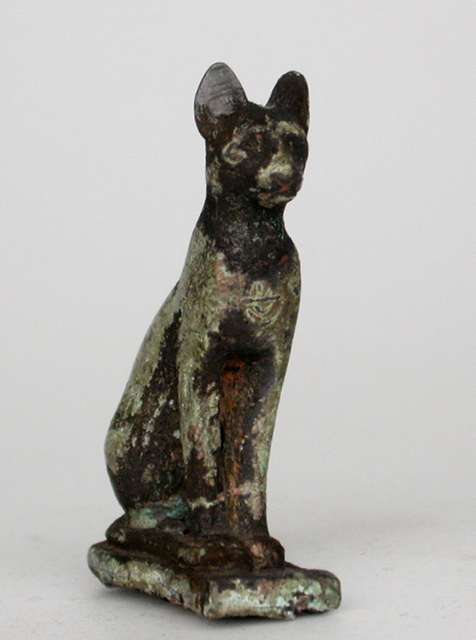
Egyptian Cat Statuette
Some 3,500 years ago their art depictions began to show them hunting with cats. Later on, they were shown cohabitating with them in more domestic settings, to the point where they were eventually depicted as deities. (Egypt was not the only area to have cat deities, they were deified all over the world, but this post would be incredibly long if we went through them all!)
Some such were Pakhet, the goddess of war, Bastet, goddess of fertility and motherhood. They were kept as treasured pets, and when a pet cat died, everyone in the household would shave their eyebrows to express their mourning. Wealthier families would embalm their cats and bury them in cemeteries. Killing a cat was punishable by death. However, sometimes it was common to sacrifice cats to Bastet – snapping their necks and mummifying them, then sold to be left as offerings. These cats appeared to be specifically bred for this purpose and were excluded from the laws.
When archaeologists opened the tomb of Beni Hassan, there were over 80,000 mummified cats that we believe were used for this very purpose. Insane, right?

Tomb of Beni Hassan
The Egyptians had two forms of mummification. In both, the organs were removed and the body stuffed with sand or straw, they were then positioned and anointed with oils, fats, and spices, wrapped, sealed, and potentially painted. In the first, the front legs are placed along the body, back legs broken and folded up with tail pulled through them, making the cat a tubular shape, then wrapped in linen. In the second, the head, legs, and body are individually wrapped, most have the faces painted to retain the facial features such as ears, nose, and eyes. If the owner was wealthy, they may have had their own cases of wood. The heads may have been bronze or gilded. Some might have had opulent sarcophogi. They were mummified to immortalize their pets, to offer to the deceased as meals on their journey to the afterlife (ritual), or as an offering to the goddess Bast as blessings for fertility and safe birth.
Egypt actually got duped into losing a war due to their love of cats in the 2nd century; The Persians knowing they were a weakness, decided to carry cats into battle figuring the Egyptians would be less likely to attack them. They were correct. 50,000 Egyptians fell, while only 7,000 Persians did, and they successfully stormed and overtook Egypt!

Cat Mummy
The export of cats was banned, and when smuggled, governments were sent to retrieve them – the Egyptians did not want to share these precious creatures. Despite this, they still appeared elsewhere, likely due to Phoenician trade ships, due to the cat’s success as pest control. They either stole them or included them in trades in order to get them. Once they made it to Greece and Italy, they were able to spread freely and become common throughout Europe and began working as pest control on roman ships. This continued for centuries, cats traveling all over the world by ship and making their mark. As cats traveled around the world, they began to experience changes – along with their domestication, obviously, genetic shifts happen, and their appearance did too. The wildcats they came from were all mackerel-type tabbies with thin, organized stripes. As they domesticated, they started to develop “blotched” tabby patterns, or “marbled” coats as we see in cats today – over time different coat colors started to appear, as they appeared in Ireland and on Norse ships, one would see orange coats and markings, for instance.
It’s a long-held belief that shortly after cats arrived in Europe, around the fall of the Roman Empire and the rise of Catholocism, that cats became reviled, that they were massacred and associated with all things evil. They were demonized with paganism, and through witch trials and the plague, nearly wiped out in the population. This is where the waters get very murky. It seems this has been perpetuated through faulty information and straight-up misinformation with little to nothing but assumption to back it up. Having actual historical papers pointing in the opposite direction, I have to land doubtful. Believe what you will, but it doesn’t seem a cats past was quite as tumultuous as it’s been made out to be. I will choose to believe that cat killing was indeed more common than it is today. I have enough anecdotal evidence and enough human behavior to go off of to believe that, of course brutality towards these creatures may have been more common back then, with more superstitious and rigid human beings – but I do not have anything to prove that there was any “Cat holocaust” or “massacre” as is claimed in the middle or dark ages, nor that any of it was religiously based. So, let’s set the record straight.
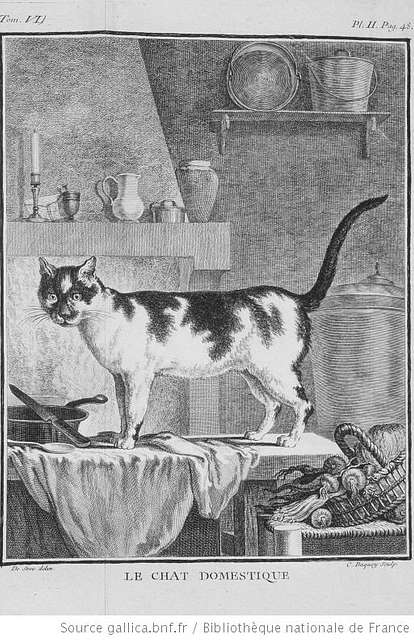
In the final year of the Roman empire, during the rise of the Christian Byzantine empire, Paganism was declared illegal. In AD 380 Catholic Christianity was proclaimed the official religion of the Roman empire and anyone found to be practicing idolatry, paganism, or failing to punish either, was to be persecuted. There was no worse crime against God than to be a pagan, and therefore any crime against them, including murder, was permitted. It is proposed that it was believed that the Catholics sought all of the Pagans’ animals to be familiars, particularly cats, and especially those black cats – and that they were demonized and killed along with their guardians. It’s also proposed that while the pagans believed that all animals had spirits, the Christians believed that all of these spirits were evil and of the devil, and therefore, that contributed to the killing. I cannot find strict evidence for this – however, I will not say it did not happen. There are poems out there denoting these superstitions, and of course some books by popes and the like – books, not papal bulls. These may have been taken by the people and turned into cruelty and horrible actions. But these were not orders against cats – they were superstitions to the same extent that we see today. (Well, perhaps – I will say I think – or hope, things have gotten better. I hear stories from three generations back about so-and-so’s grandfather rounding up every cat they could find and drowning them in the creek behind their house because they were evil – these are modern stories, not medieval. There’s a part of me that says, it had to come from somewhere and the behavior enacted shows a pattern, yeah? But I have no reason to believe it ever happened in droves or wiped out populations. Not that it makes it any less awful.)
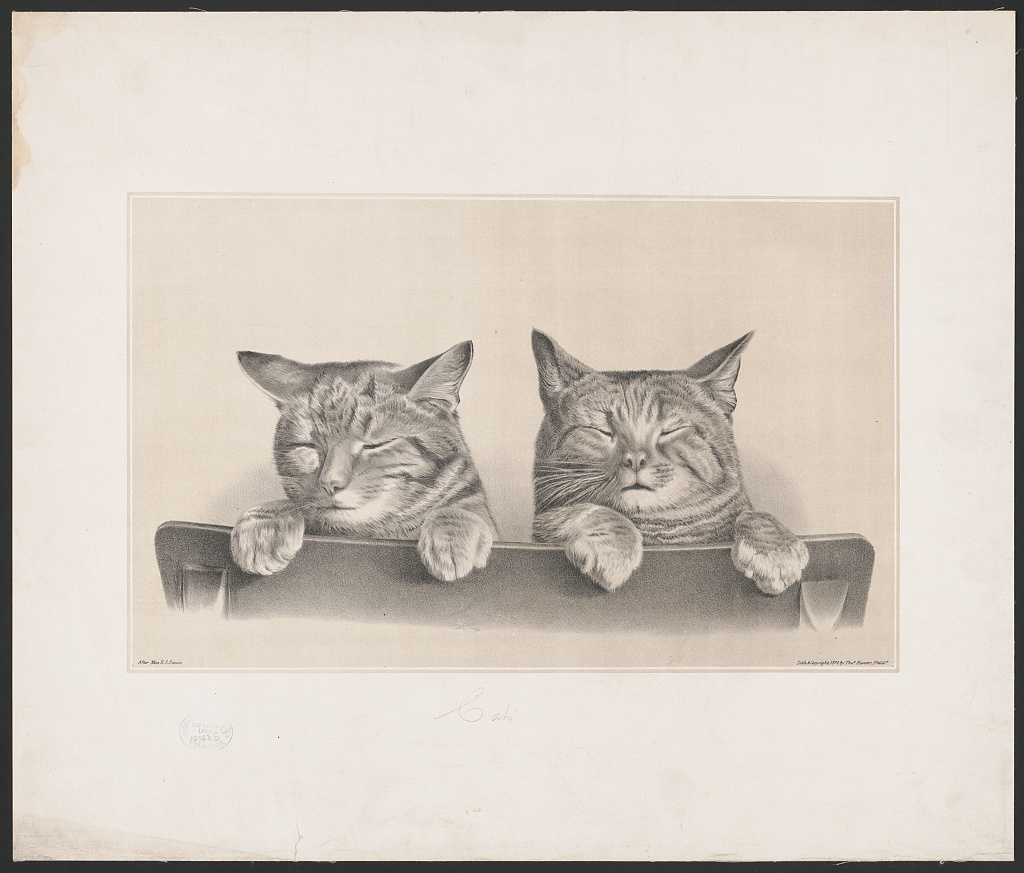
Hunter, T. (1874) Cats / after Miss E.C. Beaux ; lith. & copyrightby Thos. Hunter, Philda. , 1874. [Philda.: Lith. & copyright by Thos. Hunter, Philda] [Photograph] Retrieved from the Library of Congress, https://www.loc.gov/item/2004670356/.
In 1232, Pope Gregory IX released a Papal Bull – the Vox In Rama, which many attribute to the killing of cats. Many claim that in this he “Declared cats to be servants of evil and ordered they be killed” – but no such thing happened. There is no reference to killing cats whatsoever in the Vox, and it is making no orders, the Vox In Rama listed his observances of some Satanic rituals (which never happened and were absolutely absurd, he spoke of a black cat statue coming to life, the Satanists kissing its rectum, and so forth…statues don’t come to life…anyway.) It was a warning about a Satanic cult. If it were to be construed about cats, one could say that it was alluding to the idea that Satanists worshipped black cats, and therefore (Fill in the blanks) and maybe some crafty folks took initiative. But even still, in order for this to carry on until the plague – which this declaration is blamed for – a worse plague due to depleted cat populations (cats carry plague ridden-fleas, too…and although it’s claimed cats were larger back then and more suited to take down rats, are really equal foe to rats, dogs are better rat hunters!) It would have required over 100 years of escalated cat killing due to a vague warning, not just of black cats, but all cats – and mind you, there wasn’t just one plague. It just doesn’t fit. Beyond this, we need to think about how the plague ravaged other lands. Was it truly worse there – because there were supposedly fewer cats? Research claims no, it was just as bad in Asia and Egypt, where cats were revered. And we have no reason to think cats were hated. There’s an artistic note of them in these ages as beloved hunters, living with nuns, and so forth. They may not have been beloved pets, which is believable, every source I’ve seen claims them for utilitarian purposes throughout the roman empire and most of their European journeys until the late 1800s – but, they were appreciated.
There are depictions of cats being hunted and killed in the art of the middle ages – which many claim legitimizes these beliefs, and, I won’t tell anyone that it never happened. It’s just we have nothing to say that droves of humans were going out and burning them at the stake as is claimed. I am sure cats were killed. But the level of brutality I learned in textbooks is not legitimized, it’s as simple as that.
During the plagues, cats, dogs, and rats were all killed due to the plague-ridden fleas. It does appear that stray dogs were targeted the worst. These killings weren’t in vain, though, killing the animals and burning the bodies did remove the flea infestations and somewhat control the spread, at least of two of the three suspected plague forms they were hit with. (It’s suspected it wasn’t just one – two spread by fleas, one by human transmission)
In 1484, Pope Innocent VIII’s Papal Bull “Summis Desiderantes Affectibus” was claimed to have demanded that all witches and their cats be burned at the stake; however, it makes no mention of cats, either. It does declare that witchcraft should be punished, but, his views did not fall in favor; he ended up resigning and publishing his views in a book afterward. In this book, he did mention cats, very briefly, but never was there an order on cats. Could his order to punish witchcraft have had an influence on cat death? Sure, there was an association there, but, again, not to the proposed extent.
Although cats are often associated with the Devil in medieval texts, they were not universally reviled; they were highly regarded for their mousing abilities (in Ireland, there were actually laws made and value systems in place surrounding this!) and they were one of the few pets allowed for members of religious orders.
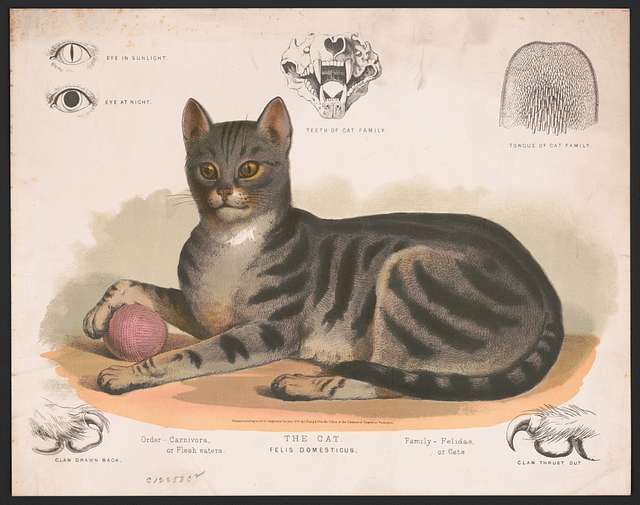
L. Prang & Co, C. C. (1872) The cat – Felis domesticus. , 1872. [Place not identified: Publisher not identified] [Photograph] Retrieved from the Library of Congress, https://www.loc.gov/item/2017660723/.
There were some dark times that can be confirmed, though…
In Ypres, Belgium, there is a festival called Katzenstoet held once every three years, now it’s a merry festival with people dressed as cats throwing plush cats from a tower, whoever catches the soft toys at the bottom getting to make a wish. However, it was once a very dark event. Once upon a time, being a cat in Ypres on the second week of Lent equaled certain death. That Wednesday, a day that became known as ‘Cat Wednesday,’ the city’s cats were rounded up and thrown off of the highest tower. Written records show the tradition goes back as far as the 12th century. It’s believed this started out of the same superstition purported above – they employed cats to support their livelihoods, taking care of the mouse problem, but since the cats were thriving and taking over the cities, and they did somewhat fear them of being agents of the devil and associated with witchcraft, they decided to lower the populations in some celebratory fashion. The last horrifying version of this festival was held in 1817, the final live cat supposedly survived and ran away, but the town decided to change its ways. They didn’t hold a festival for quite some time, but eventually revived the tradition, but instead pay homage to cats with it.
The massacre of Jacques Vincent and his wife’s cats – Vincent owned a print shop and had many interns, he did not treat these interns well, they supposedly went hungry and lived in less than optimal conditions. The workers observed that the Vincents pampered their cats, and became quite jealous. They decided as an act of protest, they would use these cats to enact revenge. At first, they pretended to act as the cats, howling at night to keep the Vincents awake. Ill comforted by these actions, the Vincents requested the interns remove their cats, all except for their favorite due to this, but instead, the staff killed their favorite cat by breaking its back. They proceeded to round up the remaining cats in sacks, beat them with pipes, dump them out near death, and put them on trial in front of the guardians, finding them guilty of witchcraft, and sentencing them to death by hanging. To these interns, this was simply a protest against the bourgeois lifestyle and mistreatment of themselves – to the Vincents, it was much more. The perception of cats as beloved animals was not a widely held thing, and more of a sign of status.
There is written documentation denoting cat burning on St John’s Day celebrations in France – be it in cages on the ends of poles, in sacks thrown into bonfires, or cats simply lit on fire and chased through the streets almost as games of sport – the most credible being dated back to the 1500s – but many claim it persisted into the 1600s. There is no historical evidence to show that it did, despite these claims. It’s said that it was outlawed in 1604 due to a plea by king Louis XIII – but he was only a child at the time, about 3 years old. It’s stated that it’s far more likely that his father did this, many claiming he did not like the practice, stating it was barbaric – but specific sources for this statement are not available.
Animal sacrifice rituals all over the world often involved cats, at all different periods of history, but they were not singled out necessarily. Tagharim, in Scotland, is one such – where cats were claimed to have been impaled alive, then burnt at the stake in multitudes for days on end. Cats were not the only victims, however, cruelty to and sacrifice of many animals, as well as humans was common.
There are still some areas where cats suffer, Australia and New Zealand especially – they were not natural predators there and have become a highly invasive species, and treated as such through rather inhumane, and, proven rather unsuccessful means. We will touch on this later.
Even in dark times, there were parts of the world they remained loved, the prophet Muhammed and the Buddhist temples kept cats in revered status in these areas; seeing them as sacred, sometimes as the resting place for good souls, or simply holding that no animal should be harmed (Absolutely!)
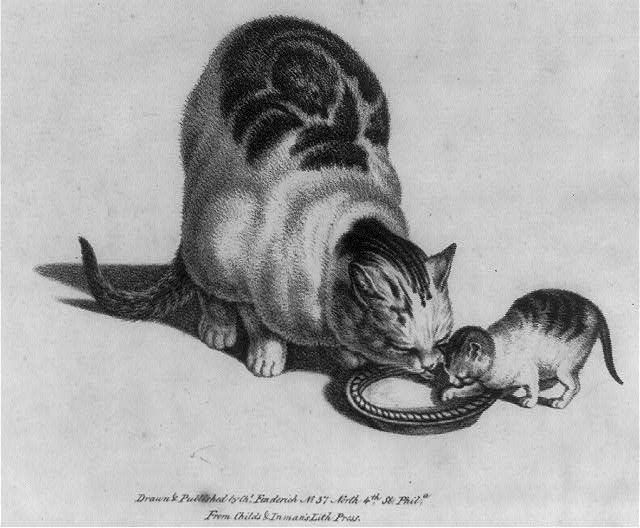
Fenderich, C. & Childs & Inman, P. (1832) Cat and kitten drinking milk / drawn. , 1832. [Philadelphia: From Child’s & Inman’s Lith. Press] [Photograph] Retrieved from the Library of Congress, https://www.loc.gov/item/2003653666/.
As time went on, cats actually came into fashion, especially with the artsy crowd. Writers and painters including them in their works, and making their companionship all the rage. Over time, the rich began keeping them as pets rather than simply mousers – and eventually, commonfolk followed cue. In the nineteenth century, deliberate breeding began and cat fanciers associations were formed. The cat officially found their place, and it’s been an upward trajectory since – albeit, a slow one. (That’s why I’m here!)
So now we have cats as we know them today…our beloved companions. Unfortunately, lack of knowledge on them and, sometimes a lack of resources, has resulted in awful epidemics of overpopulation – some of these greeted with great concern and problem-solving such as TNR and managed colonies, some with mass poisoning, euthanasia, and shoot-on-sight orders, so it’s not all bright and sunny…but we’re working on it. Fighting for better legislation, working to better educate, and keeping loud and proud about these beautiful creatures is what keeps forward momentum going. They are an invasive species, and they are contributing to problems, but it can be controlled-humanely. And they are no less deserving of love…feral or friendly.

Washington cat show opens at Wardman Park Hotel. Washington D.C, None. [Between 1920 and 1932] [Photograph] Retrieved from the Library of Congress, https://www.loc.gov/item/93502603/.
I hope you’ve enjoyed this trip through the cat’s history!
Until next time.
-Meg
